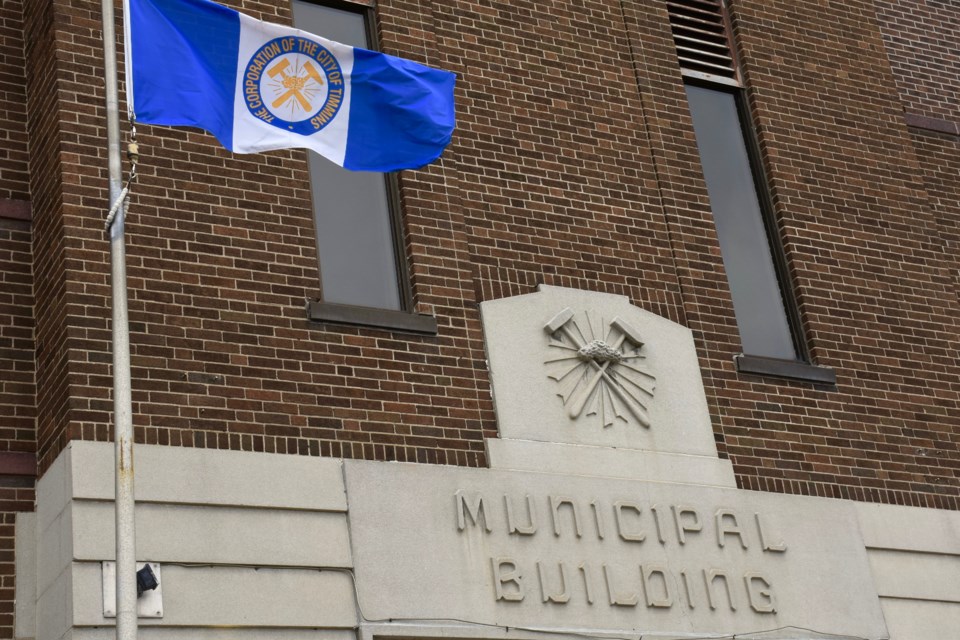TIMMINS - Decades-old emotions are resurfacing as the city takes another look at the ward boundaries.
Tuesday, Timmins council asked for a report exploring options to revise the existing boundaries of the city's five-ward electoral system. The lengthy discussion was lighthearted at times, but ignited a passionate debate about the city's history and why some councillors don't want to re-explore changing the system.
For a democratic process, Coun. Steve Black, who added the item to the agenda, said it's important to review the situation. The province and federal governments, for example, both regularly review riding boundaries.
RELATED: Timmins riding lines redefined, MP cut from Northern Ontario
"Cities do often as well, and we are a city that has a changing demographic and population in key areas and there is an imbalance to the ward system that … I've had residents from all angles give opinions of why they may want to keep it the way it is, or why they may want to change it,” said Black.
City council currently consists of nine people — the mayor is elected at large (by all residents), and there is one representative each for Ward 1, Ward 2, Ward 3, and Ward 4. Four councillors are elected to represent Ward 5.
In the last election, the number of people on the voting list in each ward was:
- Ward 1 - 5,638 people
- Ward 2 - 2,158 people
- Ward 3 - 1,383 people
- Ward 4 - 3,279 people
- Ward 5 - 16,292 people
The upcoming report will look at the ward system and include at least three options — a model with north, south, east and west wards with two councillors representing each, an election at large (where councillors and the mayor would be voted for by all residents), or sticking with the current system.
Looking at the ward boundaries is a topic that was at the table during Black's first term as a councillor and was brought back up when he was mayor from 2014-18.
The report included at this week's meeting looks at the 2015 review that asked council to consider changing its representation model.
Coun. Bill Gvozdanovic started his comments on the lighter side, jokingly asking if Black intends to eliminate Ward 3.
"The reason I'm asking is, I got Billy G Ward 3 hats. What am I supposed to do with this?” he jested.
The fun ended there, though.
'Are you in favour of elections at large as opposed to the current ward system?'
It was a question on the 2003 municipal election ballot, that saw 7,494 people vote yes and 9,212 people vote no. There was a 55 per cent voter turnout that year, with 18,567 of the 33,728 people eligible to vote casting a ballot.
Gvozdanovic was on council at that time and remembers fighting the issue.
Talking about changing representation has long been a charged topic.
RELATED: Amalgamation plan sparked a bitter battle in the Porcupine Camp
In 1973, the Town of Timmins, and townships of Mountjoy, Tisdale and Whitney were amalgamated to create the City of Timmins. With an area of 1,240 square miles, it created the largest municipality in Canada at the time.
The current ward system reflects those historic communities. Ward 1 is Mountjoy; Wards 2 (South Porcupine), 3 (Schumacher) and 4 (Porcupine) are communities in Whitney and Tisdale townships; and Ward 5 is Timmins proper.
Those communities, argued Gvozdanovic, have always had representation.
“You don't think we're going to push back? We're already in a submissive position. You don't think that if this doesn't incense the residents in the east end, and I know it's not the intention, but we're always going to be looking over our shoulder,” he said.
Reading the report over the Thanksgiving long weekend sparked a lot of emotion in Ward 2 Coun. Lorne Feldman.
It's a topic he says demands a lot of discussion.
The review, he said, feels like a silencing of the east end.
“That is how many residents have and will view this. I don't want to harken back, but I think I do need to harken back to amalgamation. I still hear that daily about how ... the will of Timmins was imposed on the east end. They're not going to tolerate that again, in any way, shape or form,” he said.
Feldman talked about the magnitude of the discussion, and the timing as the city budget is coming up and there's a lot of work for councillors.
“I see a lot of co-operation at this table, a lot of collaboration. And if it does move forward, I think that's going to serve as a big distraction, because it will be a fight, and the fight will … be a difficult one, and potentially one that could undo a lot of the consensus that we've built around the table to get things done,” he said.
Gvozdanovic also talked about bigger issues going on in the city.
“You want to go to a referendum, you're going to lose, so go ahead and waste everybody's time and money,” he said.
As the current deputy mayor, Ward 5 Coun. Cory Robin chaired Tuesday's meeting because Mayor Michelle Boileau is on maternity leave.
He sees the report differently, talking about how someone in Mountjoy, for example, may see their vote as having significantly less power than other wards.
“So this is less about taking power away from anybody, but raising the tide so that all people's votes matter and that everyone can have effective representation in this room. And we can't have a robust, serious discussion without more of that information,” he said.
Having staff create a report was approved 4-3 in a recorded vote.
Councillors Black, Robin, Andrew Marks and Rock Whissell were in favour. Coun. John Curley, Gvozdanovic and Feldman were opposed. Bouileau and Coun. Kristin Murray were not at the meeting.
You can read the 2015 KPMG report here.
